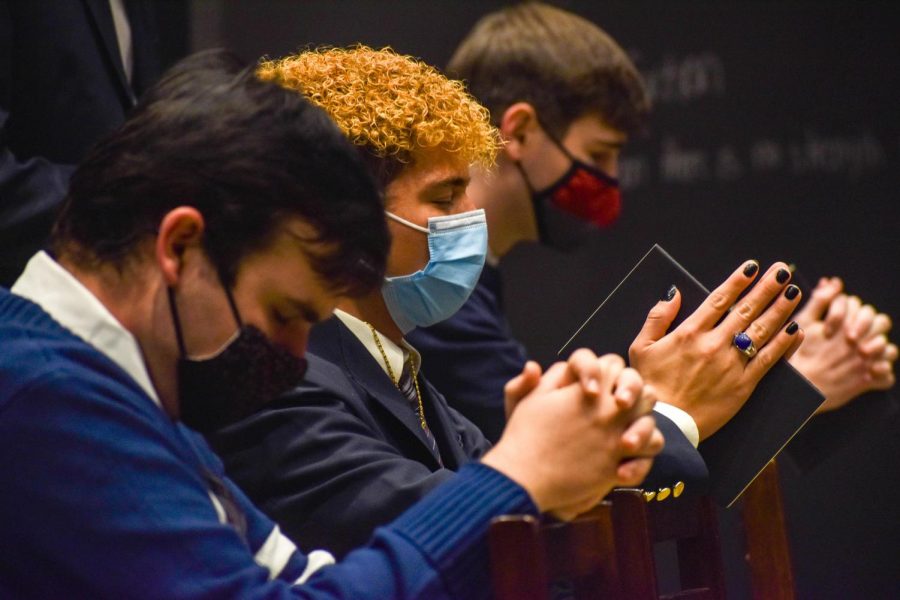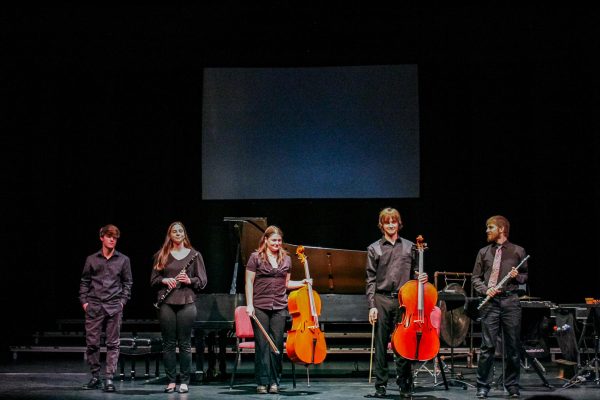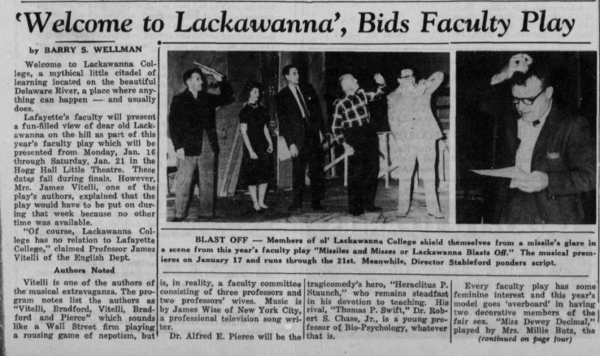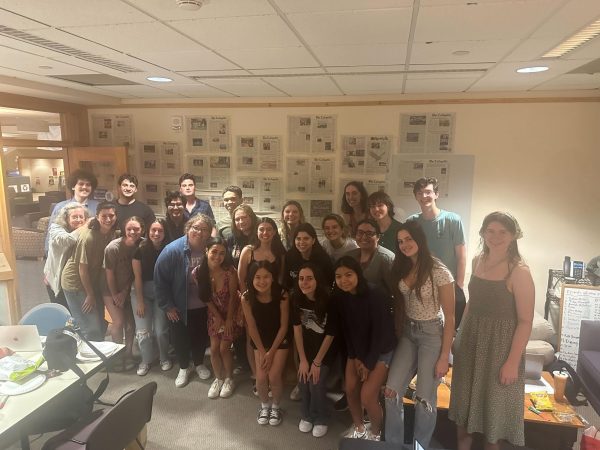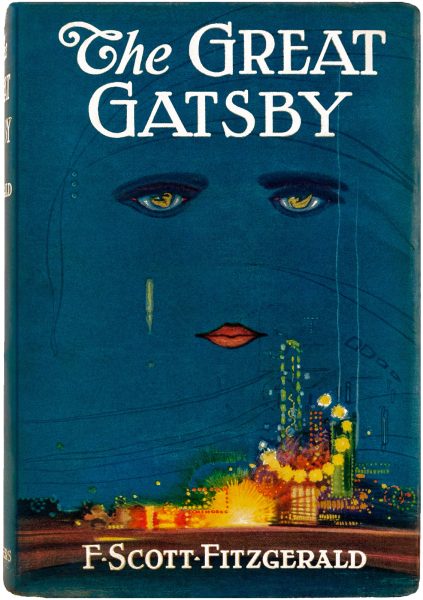Review: ‘Shakespeare’s R&J’ is a ‘transformative experience’
November 12, 2021
For true camaraderie and enthralling action, look no further than the upcoming production of “Shakespeare’s R&J.”
Starting Nov. 18, the theater department will present an innovative and modern twist on a true Shakespearean classic through “Shakespeare’s R&J,” directed by Lizzie Gumula ’22 as a part of her honors thesis.
After they are forbidden to do so, four boys attending a traditional, all-boys boarding school act out “Romeo and Juliet.” In the process, they grow up and discover vulnerability and connection in each other’s arms. The play takes an introspective look at what it means to perform and how the line between art and reality can blur.
In addition to borrowing dialogue from the original “Romeo and Juliet,” the play also uses content from Shakespeare’s “A Midsummer Night’s Dream” and “Sonnet 18.” This show is unique in that the cast’s friendship feels so authentic. The choreography, props and set design feel very intentional and each actor switches seamlessly between the roles of schoolboy and whichever Shakespearean character he is embodying.

Peter Canevari ‘23 and Jefrey Alexander ‘23 play Romeo and Juliet respectively (in addition to Students 1 and 2). Their romantic performances feel very authentic. Both actors go through a full emotional range and play off of each other’s performances beautifully. Each look and gesture felt like very genuine love.
Cormac Hurley ‘24 and Christopher Taverner ‘25 portray the other students, in addition to the nurse/Tybalt/Balthazar and Mercutio/Lady Capulet. Even when they are not the focus of a scene, Hurley and Taverner are engaged in the action and showcase their own compelling story. Elements that really stand out are Hurley’s ability to transform his voice and mannerisms to suit each distinct character and Taverner’s passion in each line.
Scenic Designer Eleanor Williams ’22 thoughtfully executed a set that mirrored the action. A platform is used to indicate where the audience should focus, yet the rest of the stage is shrewdly utilized when the characters need to sneak around.
Each prop is multidimensional. For example, one piece of red fabric is used to represent various weapons, a sheet and a curtain, among other objects.
In addition, the technical elements of the show are all very purposeful. The lighting, designed by Stephanette Schwartz-Smith and managed by Hayden Fisher ’22, utilizes bright and warm tones for the scenes in the school, and cool and dreamy tones for the scenes that take place in the world of Romeo and Juliet.
Phil Ingle’s sound design features songs adjacent to the era of the Beach Boys. The soundtrack gets increasingly rebellious throughout the show to symbolize the characters’ evolution.
In an interview, Gumula called the show a “transformative experience” in that one can see each
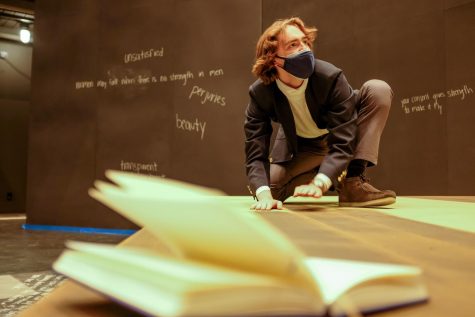
character embark on an impactful emotional journey. Echoing this, the stage combat and choreography feel vivid, real and captivating. Each scene is meaningful and the cast’s chemistry is extremely palpable.
Tickets for “Shakespeare’s R&J” can be purchased on the Lafayette art’s website. In addition, the theater department will offer a related talk titled, “Intersecting Theater & Queer Theory: A Discussion on ‘Shakespeare’s R&J'” on Nov. 15 at 12:15 p.m. in the Gendebien Room of Skillman Library.



































































































